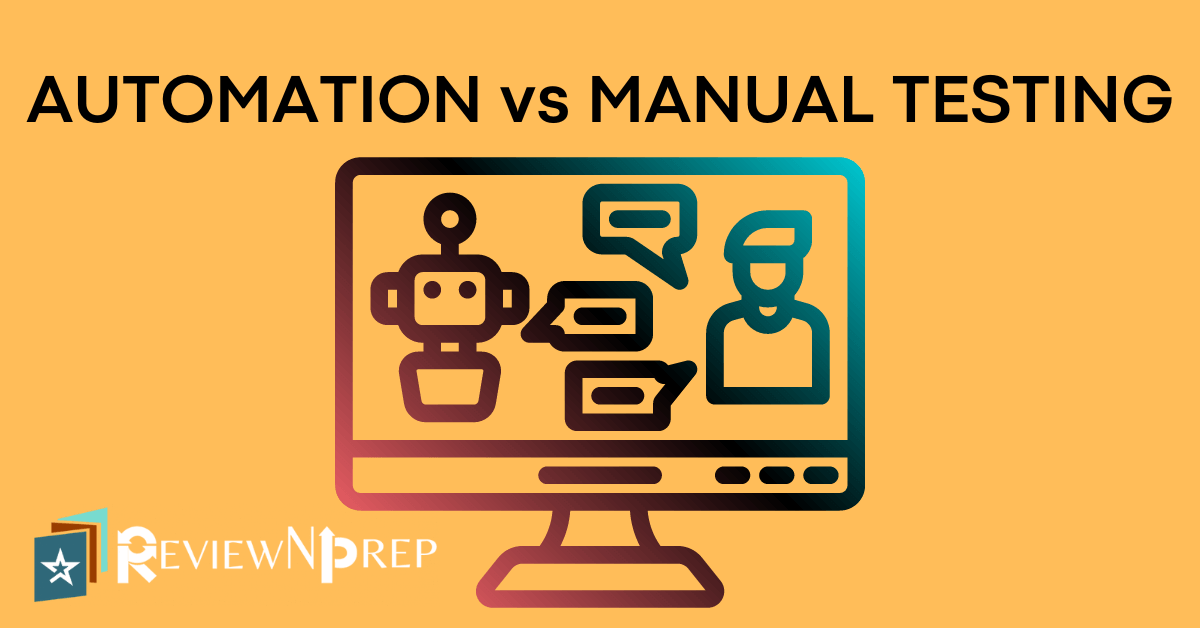|
|
In this era of cloud computing and AI changing the tech game, software influences a far bigger audience. Different software products enhance business prospects, contribute to upscaling life standards, offer numerous services to massive audiences quickly, and transition our world into a more innovative one.
What’s required here is a fail-proof and smooth software functioning, cutting-edge design, and attractive user interfaces. And for that, the need of the moment is to test the software throughout its development life cycle to keep it flawless and to work smoothly.
Software testing, often underrated and neglected by most businesses, ensures that the software performs as per business expectations and satisfies users. In addition, testers ensure the software product’s performance is not sacrificed by running various tests using manual and automated testing approaches.
This blog will discuss software testing, its two types, and their features and benefits. But first, let’s begin with what software testing is.
What is Software Testing?
Software testing is a vital part of the Software Development Life Cycle (SDLC) that analyzes the software product/application. It establishes whether the newly created application meets the business requirements and specifications. In addition, testing verifies each functionality throughout all stages of the SDLC and validates the app performance. Software testing is a part of the bigger quality assurance (QA) process. QA is aimed at ensuring that the project processes are efficient for the delivery of a product with acceptable quality.
Now that you might be familiar with how software testing works let’s dive deep into its two types and their features and benefits.
What is Manual Testing?
Image Source: Freepik
In Manual testing, a Software Tester physically tests a software application to find bugs without any automation tool. Manual testers adhere to a written test plan that outlines a set of distinct test scenarios.
They compare the actual behavior of software to the expected behavior, and any difference is reported as a bug. It allows them to better understand the end user’s perspective and evaluate an application based on its most important feature: the user experience.
Manual testing has various benefits and drawbacks, such as the following:
Benefits:
Short-term cost reductions
The cost of purchasing software automation tools is high. However, manual testing is less expensive in the short term because it requires no QA automation tools. Additionally, since it is an entirely manual process, one need not worry about putting the initial costs.
Less complicated to implement
You can hire a QA tester for manual testing quite easily compared to automation testing. Many manual testing tasks can be done without access to code or knowledge of coding.
Greater attention to complex issues
Running automated test cases to simulate every possible result for a feature can take a while. In this situation, manual testing lets testers concentrate more on logical edge cases for challenging features and functionalities rather than simulating every possible user path.
Recognize underlying user issues
Manual testing locates bugs that aren’t related to the code, such as server responsiveness. It enables the developing application to be used in the same manner as when it is released. Manual testing is more likely to find flaws that emerge when a user uses the software in a particular way.
Greater flexibility
In an agile environment, the capacity to react to the slightest requirement changes instantly is needed. In this case, manual testing offers the flexibility to quickly test a new feature or check any changes in the UI.
Drawbacks:
Highly time-consuming
The time required for manual testing is excessive, and it has numerous time-related problems. Due to these constraints, the entire manual testing process is only a viable option for some software changes.
Increased probability of human error
People are prone to forgetting to retest a feature after each update when a program is executed repeatedly. It can also be difficult for a QA engineer to focus on numerous areas within a single program, which leads to less accurate test results. Manual testing can also result in human errors, such as mistakes brought on by exhaustion, lack of concentration, and distractions.
Ineffective for performance testing
Performance tests ensure that your application meets the required level of service quality and offers a positive user experience. However, manually evaluating the durability of applications can be daunting if the applications are incredibly challenging and designed to be accessed by multiple users simultaneously.
In addition, several testers would be needed to determine whether the software can withstand the strain of many users at once without crashing.
Monotonous and tedious
It is tedious to write the same bugs and error reports, fill out the same forms, and run the same tests over and over. Moreover, the excitement of bug detection wears off after a while, no matter how innovative, enthusiastic, or persistent a manual tester is. As a result, QA analysts struggle to remain focused on the process, increasing the likelihood of errors.
Maintaining manual testers is costly
Manual testing can be costly depending on the nature and quantity of testing required for a project. When a project is large, takes a long time to complete, or is repeated, the cost skyrockets.
What is Automation Testing?
Image Source: Freepik
Automation testing employs specialized tools to run test scripts without human intervention. Instead, the test automation engineer creates the test scripts and executes the application using the automation testing tools when performing automation testing.
You can easily approach the test data, handle the test implementation, and compare the actual output against the expected result with an automation testing tool.
However, a sizeable financial investment is necessary to implement automation testing properly. The market offers a variety of automation testing tools, including Selenium, QTP, Watir, and Testim.
Automation testing also has its own set of benefits and drawbacks, including the following:
Benefits:
Quick and powerful
A QA Automation Tester can automatically test new features by creating algorithms to perform repetitive tests. Moreover, test scripts can run tests five times faster than a person can. This is because it completes manual tasks and simultaneously writes several scripts. Moreover, in the DevOps testing method, automation enables speedy software deployments.
Additionally, compared to manual testers, who typically work five days a week in eight-hour shifts, automation tests can run continuously around the clock.
More reliable
Human error may lead to the omission of crucial information. Machines, however, are error-free when they are adequately developed. And if there is a problem in the program code or execution, one can see it immediately. It either runs successfully or it doesn’t in automation testing; nothing is supposed to behave as expected.
Long-term cost-effective
It is less expensive when a tester works on a project for a shorter period. This point is frequently raised when comparing manual testing to automation testing, and to a large extent, it is true. But automating everything that can be automated will undoubtedly save you a lot of man-hours and, consequently, much money over the long run.
Related: Learn Test automation with PyTest
Video Course
Everyone is aware of the outcome
In manual testing, only one person conducts the test, making it impossible for the entire team to monitor the results. However, additional team members can log in and view the output in automated testing. As a result, team communication is enhanced, and better outcomes are produced.
Staying committed is interesting
Software testers experience significant stress reduction when the testing process is automated. They can develop applications to help improve the testing suite once the labor-intensive manual processes have been eliminated. Additionally, it increases their job satisfaction and lessens the stress and monotony of their daily testing schedules.
Related: Learn PyTest from Scratch in 2022
Video Course
Drawbacks:
Costly investment
Utilizing automation calls for the use of highly qualified programmers. For instance, programmers who write complex codes for performance testing, switch on and off spring virtual machines and browsers, and oversee extensive testing phases. Additionally, automated systems may be highly expensive.
Test case preparation takes much time
A software tester creates a test case for running a script to begin test automation. Because each test case must be written by hand, the pre-preparation of test cases takes much time.
Absence of human touch
The capabilities of today’s technology limit automated testing. Human intuition and interaction are necessary when assessing design or user-friendliness, which are absent in automation testing.
Automation is not required for all tests
Another area where automated testing falls short is testing an entirely new function or feature. A software testing expert must first identify the anticipated results before learning how to code a test script. Because of this, manual testing is often still the best choice in numerous instances.
Insufficient testing infrastructure
The need for current infrastructure to provide adequate test coverage and quick processing is another issue that many organizations deal with.
Which one should you go with?
Image Source: Freepik
Finding the ideal balance between manual and automated testing is crucial for a highly effective software testing team to build awesome websites and apps. This guarantees quick deployment of error-free websites and applications while keeping costs in check.
For instance, manual testing is frequently used for quick projects, minor updates, and GUI-focused products. Testing automation is useless if you create a straightforward website or an app with few features.
Meanwhile, test automation generally works better for more significant projects. For example, test automation works perfectly for ongoing projects requiring frequent updates and a high-performing UI/UX. Furthermore, it can be an affordable investment if you frequently need to rerun tests and want to release software more quickly.
The fact is that each of them is best used in specific situations because they each have advantages and disadvantages. But in most circumstances, combining the two can only produce top-notch outcomes.
Author’s Bio
With her academic background in journalism and mass communication, Shaurya works as a content writer for Wishup. She is someone who enjoys romanticizing the world in poetry while holding a camera and a pen in each hand.
Further Reading:
How to avoid communication gaps in your project for smooth execution.

